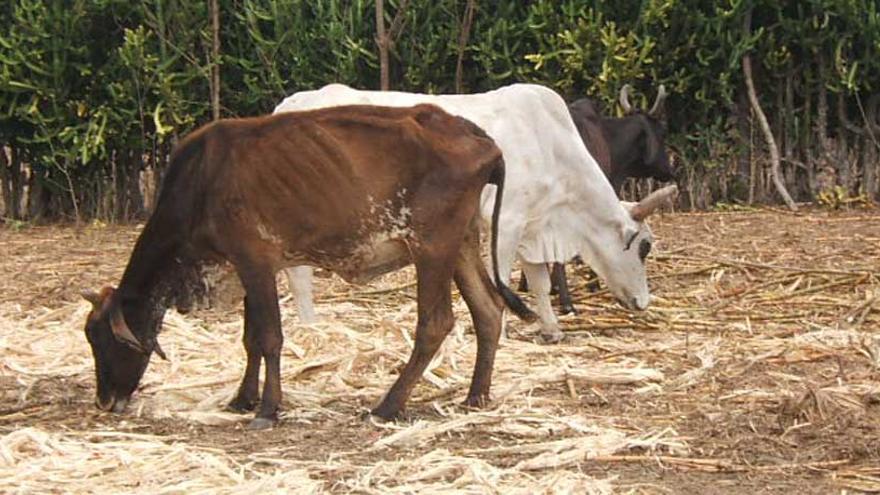
![]() 14ymedio, 11 September 2020 — More than 25,000 cattle died from malnutrition in Cuba between January and July of this year, which affected the production of meat and milk, according to official media, and forced the island to increase its imports.
14ymedio, 11 September 2020 — More than 25,000 cattle died from malnutrition in Cuba between January and July of this year, which affected the production of meat and milk, according to official media, and forced the island to increase its imports.
In Camagüey alone, more than 17,000 cows died from malnutrition in the first half of 2020, leading to an approximately 30% decrease in milk production. In the same period, Pinar del Río failed to meet the meat production plan due to the low weight of the animals. In Las Tunas, almost 7,000 cattle had been lost for the same cause as of May, 2,593 more than in the same period of 2019.
Before Fidel Castro’s coming to power in the 1959, Cuba had more than 6 million head of cattle, but in 2015 there were just over 4 million. Current numbers continue to show dismal results. In the case of Camagüey, according to the official press, of the 161,449 cows of reproductive age, fewer than half are being milked, so fewer than 75 million liters of milk have been delivered, instead of the 88 million expected.
The depressed national production of dairy products goes to supplies stores they take payment in Cuban pesos (CUP) and in Cuban convertible pesos (CUC), but the large volume of milk, cheese and meat sold in the country is imported, especially from Uruguay and is mainly destined for the tourism sector and foreign exchange trades.
As for red meat, Cuba imports it from Chile, Paraguay and Colombia. Cuba is Chile’s third largest customer for beef, behind China and Canada. Cuba spent almost 2 million dollars on imports from that South American country in the first half of 2019.
It is striking that Cuba, although it has good relations with Nicaragua, a country considered the largest dairy exporter in Central America, with 5.5 million head of cattle in 2019, can report only good commercial intentions in this sector between the two nations.
Nicaragua announced in 2018 that it would focus on new destinations such as the Dominican Republic and Cuba in search of potential buyers for its powdered milk, cheese and other dairy products. However, the project did not go ahead because of Havana’s inefficient payment system, Zacarías Mondragón, general manager of Industrias Delmor, told El Nuevo Diario in 2015. The island pays using a bill of exchange backed by the National Bank of Cuba, he detailed, “but to collect on it we had to wait six months; companies need cash.”
___________
COLLABORATE WITH OUR WORK: The 14ymedio team is committed to practicing serious journalism that reflects Cuba’s reality in all its depth. Thank you for joining us on this long journey. We invite you to continue supporting us by becoming a member of 14ymedio now. Together we can continue transforming journalism in Cuba.
